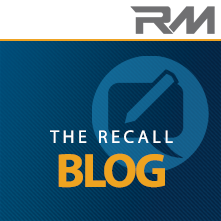Leverage Personalization and Segmentation to Drive ROI and Trust in your Recall Campaigns
Leverage Personalization and Segmentation to Drive ROI and Trust in your Recall Campaigns
The Problem: Too many dealerships use a “spray-and-pray” approach to recall notifications—sending mass messages that aren’t relevant to the customer’s vehicle, location, or engagement level. The result? In a digital-first market where consumers are bombarded with messages, generic “You may have a recall” emails or postcards no longer get the job done.
The Solution: Behavior-Based Recall Targeting. Just like you wouldn’t treat a 90-day inactive customer the same as one missing for 18 months, recall communications need precision. Start with these best practices:
…
1. Segment Your Recall Audience
Don’t rely on your CRM or DMS alone, they’re typically limited to first-generation owners. Instead, enrich your data using third-party recall data providers to reach:
- 2nd, 3rd, and 4th generation owners
- Out-of-warranty vehicles
- VINs with active, unrepaired recalls in your PMA
…
Segment your audience by:
- Last dealership visit
- Ownership generation
- Recall type (urgent, mobile-eligible, high-labor, etc.)
- Proximity to store or mobile coverage areas
…
2. Tailor Your Message by Segment
A blanket “You may have a recall” message is a missed opportunity. Personalize content based on:
- Vehicle year/make/model: “Your 2018 Camry has an active airbag recall.”
- Urgency & safety relevance: “Your vehicle may be affected by a fire risk. Schedule immediately.”
- Service eligibility: “We can complete your recall with no out-of-pocket cost, and a free car wash.”
- Pro tip: Include the customer’s name, specific vehicle, and clear call to action. This boosts credibility and urgency.
…
3. Use Time-Sensitive Offers to Drive Action
Recall work is typically non-revenue; but conquesting recall customers is a gateway to upsells, service retention, and vehicle replacement.
Create urgency with offers like:
- “Complete your recall by [Date] and receive a complimentary inspection”
- “Free oil change for vehicles over 100,000 miles with open recall”
- “$25 gift card for scheduling through our mobile recall unit”
…
4. Track, Test, and Optimize
Just like any marketing campaign, recall outreach should be measured and optimized:
- Track open, click-through, and redemption rates
- A/B test subject lines and incentive types
- Re-target non-responders with adjusted offers or alternative communication methods (e.g., SMS, outbound calls)
…
5. Use Multi-Channel Outreach
Your customers aren’t all checking email. Combine:
- Email (personalized, VIN-specific)
- Direct mail (for harder-to-reach customers)
- Phone follow-up (especially for urgent safety recalls)
- Mobile alerts or SMS (when consent is in place)
- Multi-channel outreach improves visibility and conversion.
…
Key Takeaway:
Personalized recall marketing is more than good communication, it’s a strategic revenue channel. When done right, it increases service bay traffic, builds brand trust, and brings lost customers back to your store.
…

